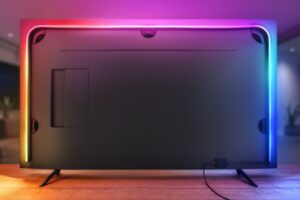Pretty lights that’ll cost you a pretty penny.
Philips Hue Play Gradient Lightstrip review
Philips Hue Play Gradient Lightstrip price
The Philips Hue Play Gradient Lightstrip starts at $399.95 for 55-inch TVs, $439.95 for 65-inch and $499.95 for 75-inch screens. A bit pricey, absolutely, but not over-the-top. What pushes it from premium to ridiculously expensive is the fact that, in order for it to work as advertised, you need two additional Philips Hue products: The Hue Bridge (which comes in Philips Hue smartbulb starter kits, starting from $159.95 RRP, or can be purchased separately for $99.95 RRP) and the Hue Play HDMI Sync Box, which retails for $499.95. All up, that’s a minimum spend of around $1,000 for those starting their setup from scratch.
Without the Hue Bridge and Play HDMI Sync Box, your Play Gradient Lighstrip is just a normal, single-colour, uncustomisable light strip - and a costly one at that. With the Hue Bridge, you can at least change the colour of the light, create scenes and control it with your voice assistant of choice, but it’s the Hue Play HDMI Sync Box that’s required in order for the light strip to mirror the colours of your TV in real-time.
Prices listed are accurate at time of publish on 14 March 2022. Pricing and availability are subject to change.
Philips Hue Play Gradient Lightstrip setup
Physically installing the light strip is a simple process. It comes with two corner mounts and three side mounts, all of which attach to the back of your TV with a 3M adhesive backing. Before doing anything, however, it’s worth downloading the Philips Hue app to guide you through the setup - it’ll show you where to position the mounts and how to fit the light strip for even coverage.
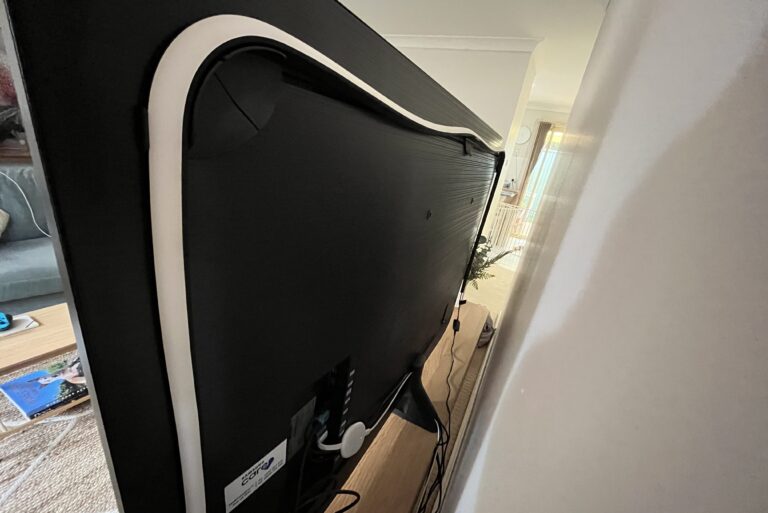
The light strip can be plugged into the same power adapter as the Sync Box (if you’re lucky enough to have one), otherwise, it does come with its own. Going back to the Hue app, you’ll be taken through the steps to connect the light strip with your Hue Bridge (again, if you have one), but annoyingly, you’ll need to download an additional app (Philips Hue Sync) in order to connect it to your Sync Box. Unfortunately, that does mean two apps are required if you plan on using your light strip with the Sync Box, which is a bit of a pain.
I will also note that, when I first turned on the light strip after the initial installation, I noticed small sections (approximately 20cm in length) lighting up a blue-green hue, even when the colour was set to a static white. A cursory consultation with Dr Google revealed this issue isn’t uncommon, with reports found across blogs, Reddit, Twitter and other forums. According to a Twitter response by Philips Hue, the fault may be caused by bending the strip at a sharp angle - something that’s pretty damn hard to avoid when it needs to be bent in two places during mounting. While your light strip is covered under warranty, Philips will fix it at no extra charge. However, when you’re spending up to (or in excess of) $1,000 on the setup, faults like this really shouldn’t be happening.
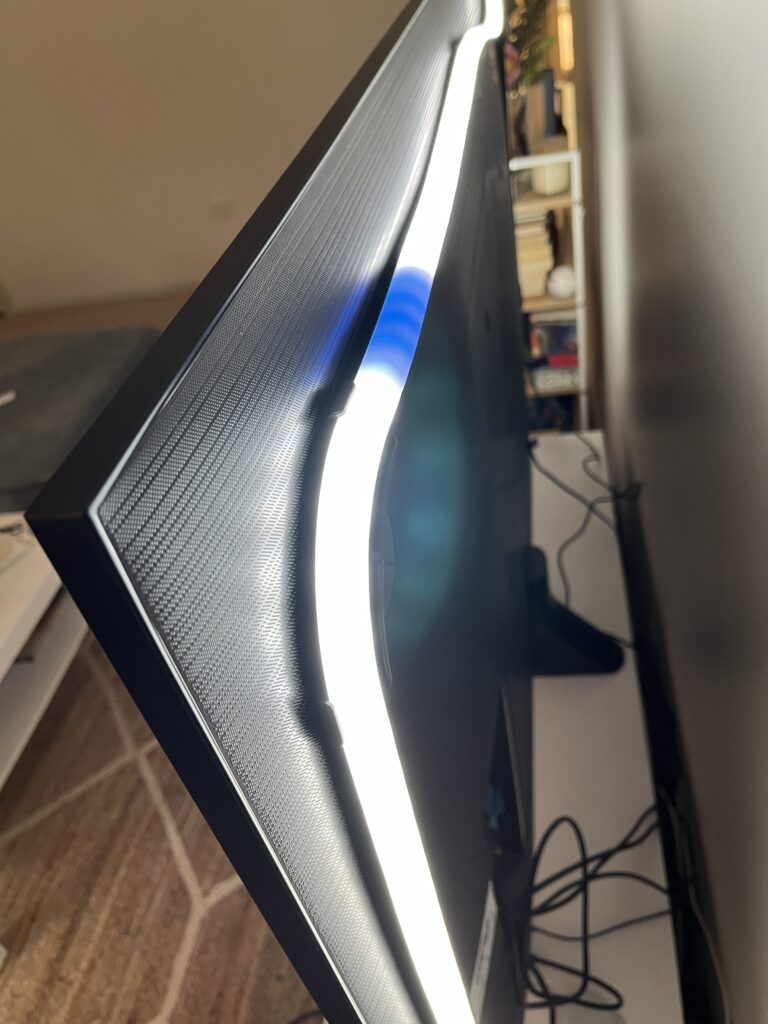
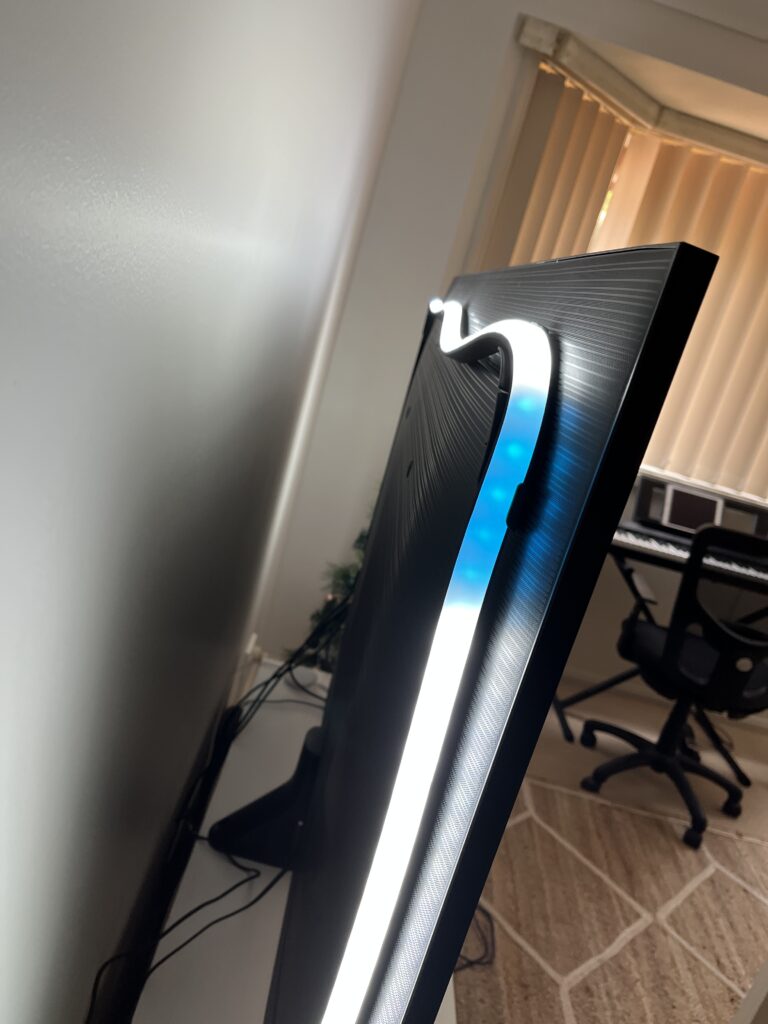
Philips Hue Play Gradient Lightstrip features and performance
The colours are accurate, vibrant and responsive, making no matter what you’re doing - whether it’s gaming, bingeing a TV show or watching a movie - incredibly immersive.
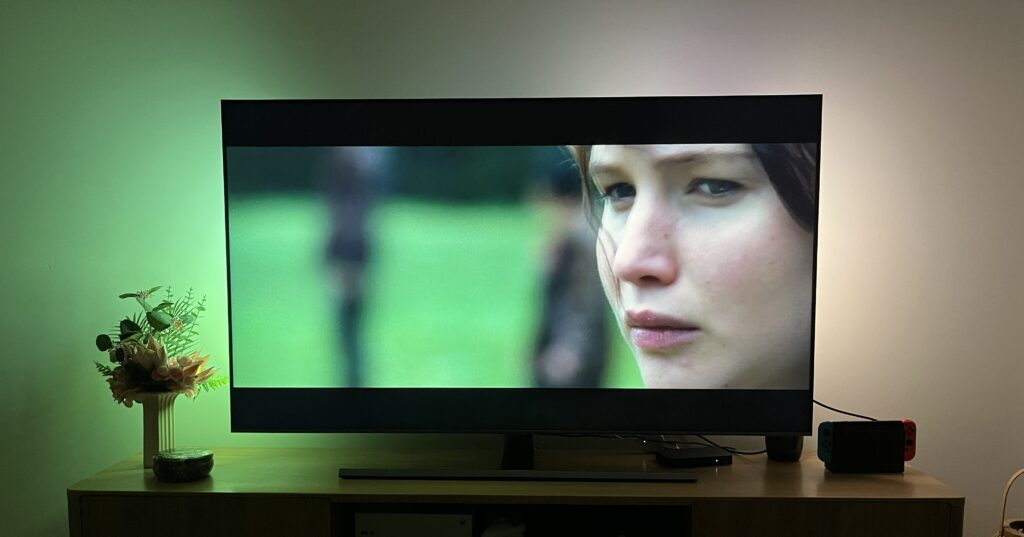
The Sync Box, on the other hand, is a little hit and miss. With my Chromecast with Google TV plugged into it, every time I turned my TV on the screen would black out briefly - often a few times - for a couple of seconds. Beyond that, it worked fine, but considering the premium price, I expected flawless performance.
Another problem with the whole setup is that, for the lights to sync up during your movie marathons or TV binge sessions, your TV’s native smart apps aren’t compatible. The light strip can only pick up what comes through the Sync Box - that is, what comes through the HDMI cables connected to the Sync Box. If you use a Chromecast, Amazon Fire Stick, game console or other external device to stream Netflix, Disney+, Stan, Prime Video and other services, you should have no trouble. Unfortunately, if you usually watch content through your Smart TV apps, you’re out of luck.
If you choose to go without the Sync Box altogether, the light strip can be programmed to display whatever colour (or colours) you want, whether static or dynamic. You can also create your own multi-colour scenes or opt for the pre-designed palettes in the app.
Is it worth it?
I honestly thought I would love the Philips Hue Play Gradient Lightstrip. It sounds great on paper, visually elevates any binge-watching (or binge-gaming) session, and there’s no denying what an attractive addition it makes to any entertainment setup. However, considering the experience as a whole, including the exorbitant cost and additional products needed, I hesitate to recommend it. Of course, if money is no object and you simply want something cool to add to your home theatre setup, then, by all means, go forth and purchase.
I, for one, simply can’t justify spending almost $1,000 on a flawless smart TV light strip, let alone one with the issues that come with the Hue Play Gradient Lightstrip.
Related Articles



